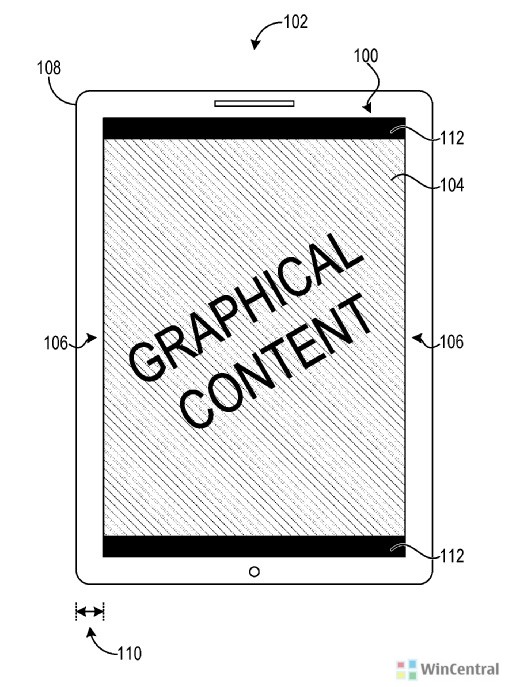A recent patent from Microsoft may give an insight into how it is planning to design its future Mobile devices. We have seen many smartphone makers coming with smartphones without bezels or minimum bezels. This design language is fondly known as Bezel-less design.
Microsoft is also working to reduce bezels on its upcoming Mobile devices, reveals a new Microsoft patent. The patent in question was applied on 22.01.2016 and imparted to Microsoft on 27.07.2017. As you can read in description below the technology discussed in the Patent can be used on a smartphone, tablet computing device.
As such, a minimum recess size is required to support the black mask and display components. This in turn imposes a minimum bezel width—e.g., the distance between an outer edge of the active display area to an outer edge of a device chassis—on a display device, which may limit the overall aesthetic quality of the display device by surrounding the active display area with a highly perceptible non-active display area.
To address the issues described above, implementations are described herein for providing a display device that reduces or eliminates the use of a black mask or other dedicated concealing structures. FIG. 1 shows a display device 100 implemented in a mobile computing device 102, which may assume the form of a smartphone, tablet computing device, etc. However, display device 100 may be implemented in any suitable type of computing device, in combination with other suitable devices (e.g., touch sensors), or as a display device alone without being combined with other device types.
There are many ways in which Microsoft’s patent claims to reduce the bezel size on its display devices.
Another example provides a display device comprising a chassis including a ledge surrounding an aperture, a cover layer positioned in the aperture, an optically clear layer positioned below the cover layer, and a display layer positioned below the optically clear layer, the display layer having a non-active display area extending beyond an outer edge of the cover layer and positioned below an underside of the ledge. In such an example, the display device may alternatively or additionally comprise one or more compliant supports positioned between the display layer and a bottom inner surface of the chassis. In such an example, the ledge may alternatively or additionally be an upper ledge, the chassis may alternatively or additionally include a lower ledge, and the display layer may alternatively or additionally be positioned between the underside of the upper ledge and the lower ledge. Any or all of the above-described examples may be combined in any suitable manner in various implementations.
Source: WIPO
